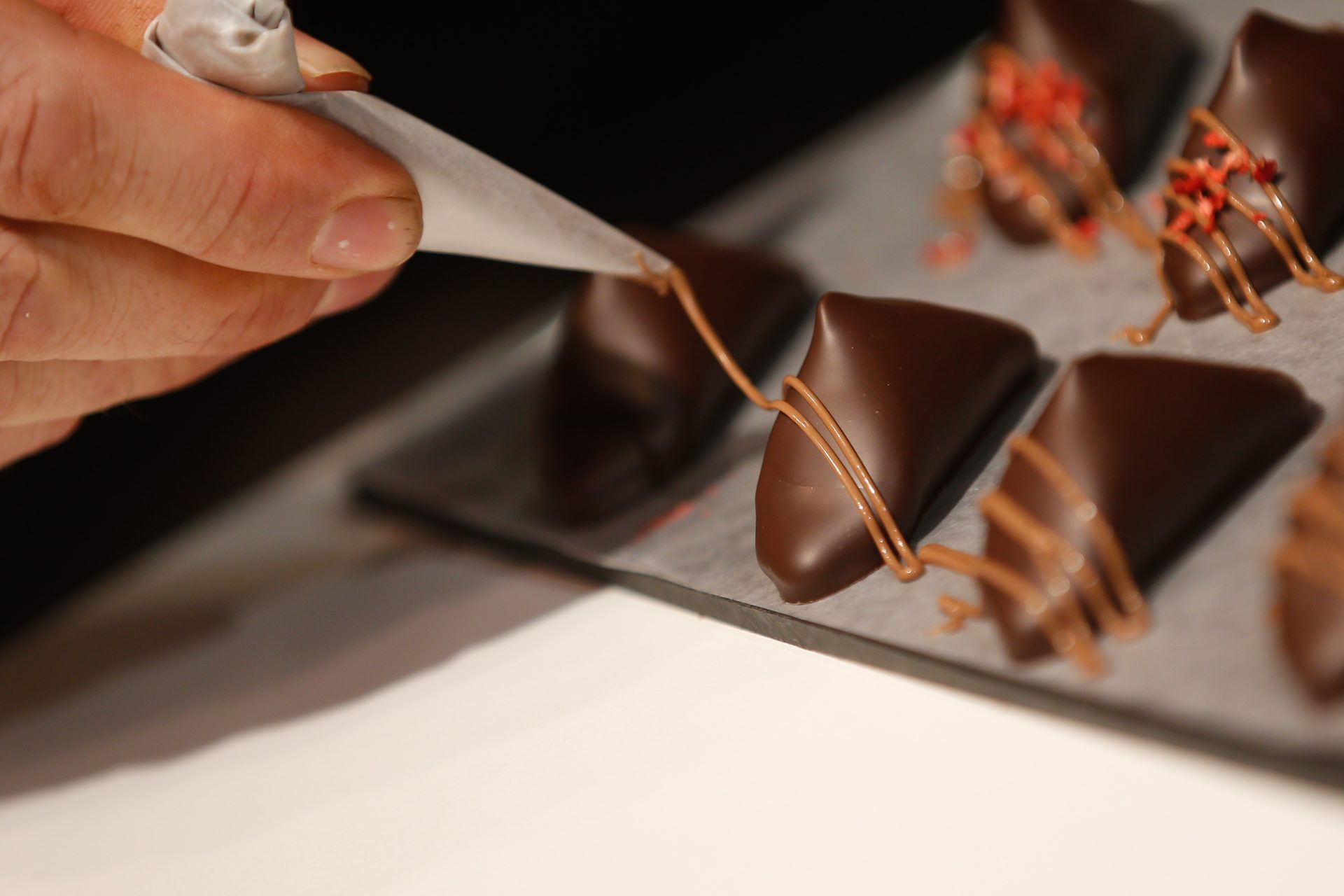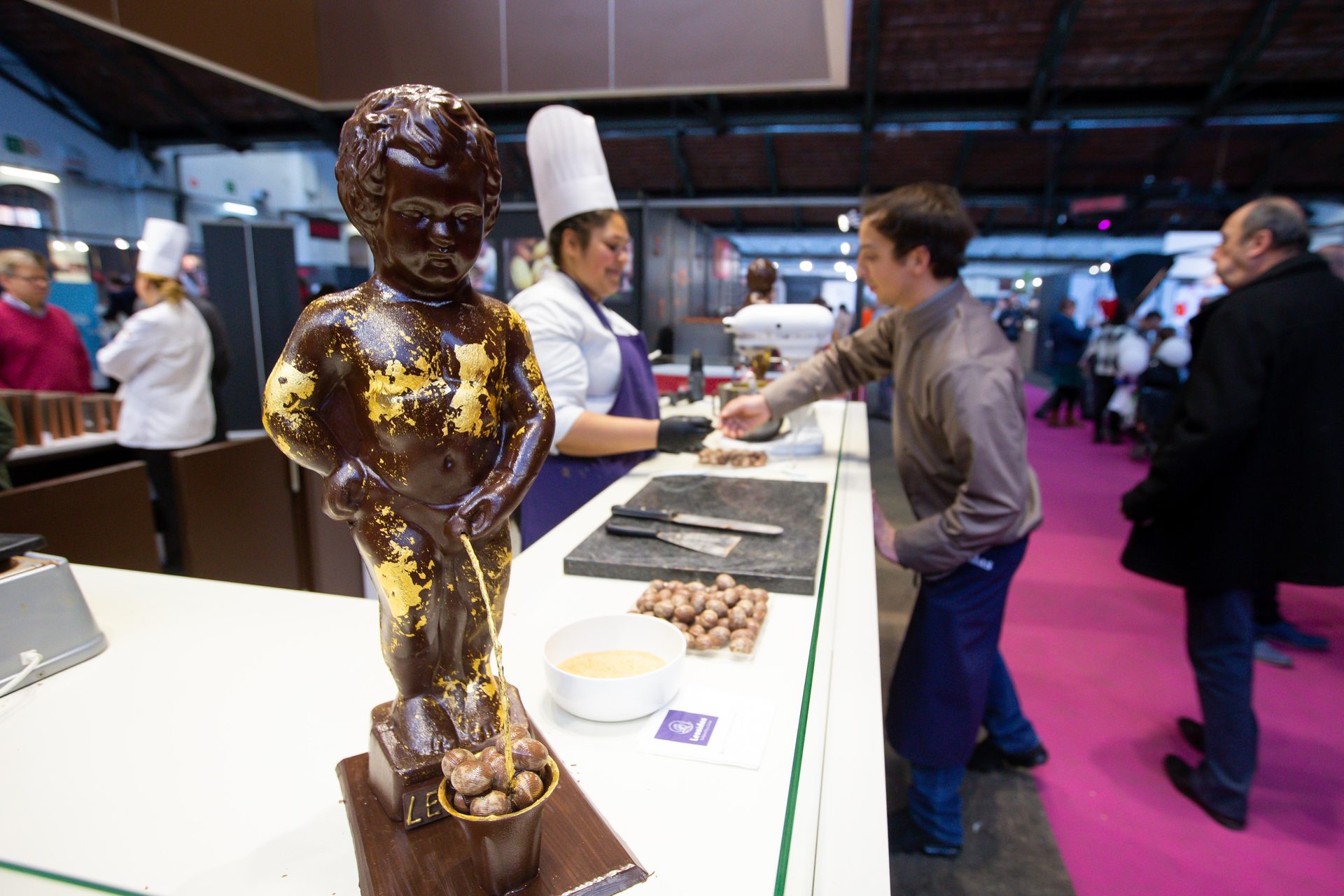Famous the world over, Belgium exports chocolate all around the globe. Known for its superior quality, Belgian chocolate is renowned for its high cocoa content, making it particularly rich.
Despite being the 19th-smallest country in the world, Belgium's chocolate has left quite the impression abroad – so much so that it is the product most commonly associated with the country. On a 2014 visit to Brussels, then-US President Barack Obama famously remarked that it was "easy to love a country famous for chocolate and beer."
Belgian chocolate is highly prized by the Belgian government, recognised as a cash cow for the national economy. One Harvard Business School study in 2016 estimated that chocolate production represented 13.1% of the total GDP, while also employing 13% of the workforce. The government, wishing to protect this lucrative sector, passes laws to protect the industry and maintain its prestige abroad.
Made in Belgium

Belgium is best known for its array of high-end pralines and truffles. The average Belgian eats eight kilograms of chocolate each year. Credit: Belga/ Bruno Fahy
As far back as 1894, the government imposed rules stating that Belgian chocolate must contain at least 35% pure cacao. In most cases, in order for Belgian chocolate to be "Belgian Chocolate," it must, at a minimum, be refined, mixed, and processed within Belgium. This regulation, which is voluntary but is largely respected by the industry, means that an impressive economy has sprung up around chocolate production in Belgium.
Belgian chocolate production spans a variety of qualities and grades. Far from producing exclusively high-end chocolate boxes and pralines, Belgian chocolate is also produced in bulk by major multinational companies.
274 VAT-registered manufacturers produce chocolate in large amounts, much of which is destined for markets overseas. Belgian chocolate finds its way into the chocolate aisles of supermarkets across the world, as well as other chocolate products such as desserts and ice creams. These companies alone employ around 8,500 people and operate 800 physical sales locations. Per capita, Belgium has the highest number of producers and shops in the world.
Belgium is home to Barry Callebaut, which is currently the largest global producer of chocolate and cocoa. While now headquartered in Switzerland, Barry Callebaut is undoubtedly Belgian, founded in 1911 when the brewing family expanded into chocolate production. Its chocolate factory in the municipality of Wieze in East Flanders is the largest in the world.
Each year, Belgium produces 584,000 tonnes of bulk chocolate and cocoa-based products, according to industry publication Confectionery Production. Industry turnover reaches as much as €5.5 billion, of which €3.3 billion is for export, notably to the Netherlands, France, Germany, and the United Kingdom.
It's all in the beans

Each year, over 300,000 tonnes of cocoa beans from across the world arrive in the Belgian port of Antwerp. Credit: Belga/ Dirk Waem
While bulk sales of chocolate represent an important aspect of the chocolate industry, boutique and artisan chocolates are better known. Any visit to Brussels would not be complete without a visit to some of the city’s finest chocolatiers. Luxury Belgian chocolates are made with high quality cocoa beans, which are ground very finely.
“It is considered worldwide as a very high quality chocolate and that all starts in the ingredients,” Mieke Callebaud, advisor to the Royal Federation of Belgian Chocolates, Biscuits, Pralines, and Confectionary (Choprabisco) told The Brussels Times. “For Belgian chocolate, we use at least 35% of cocoa ingredients.”
This means that 35% of all ingredients must be from cocoa. Belgian chocolate typically uses 100% cocoa butter despite European directives allowing chocolate producers to substitute for cheaper fats. This helps give Belgian chocolate its unique flavour.
“That’s what gives it a very pleasing mouthfeel. Why? Because cocoa butter melts at human body temperature. Vegetable fats, such as palm oil, need a higher temperature,” Callebaud said.
Belgium also uses very high quality cacao beans. Flanders’ port of Antwerp is the largest storage site of cacao beans in the world, and each year chocolatiers import billions of beans of all varieties to use to make Belgian chocolate.
“For Belgian chocolate, we generally choose the best quality cocoa beans, most of them from the Ivory Coast or Ghana… The cocoa beans are roasted and then grinded into a very fine texture. In some other countries, for instance France, they keep a much lower structure,” the chocolate federation advisor said.
Indeed, Belgian chocolate differs from its competitors in its approach to production. Swiss chocolate tends to be sweeter, creamier, and milder. Belgian chocolate uses more cocoa in its production. If milk is added, it is whole milk powder, as opposed to creamier condensed milk.
Belgian chocolates are not just a treat for markets abroad. The locals also have an insatiable appetite for Belgian chocolate. The average Belgian eats eight kilograms of chocolate per year, the third most in the world. One in five Belgians eat chocolate every day and two in five consume it every week, and more than nine in ten eat it at least once a month.
On the up
The industry is growing. Choprabisco says while the number of large-scale chocolatiers breaking into the market is low, more small-scale artisanal chocolate makers are joining the Federation each year.
“It’s the small ones that are growing… There has always been an increase over the last couple of years. There’s a trend of young people and old people, new starters, coming to the industry,” Callebaud noted.

Chocolatier David Maenhout has long been a star in Belgium chocolate. In 2008, he rose to prominence for his speciality mare's milk chocolates. Credit: Belga/ Kurt Desplenter
The industry Federation is seeing new developments in the chocolate industry. To keep up with competition from abroad, Belgian chocolate seeks to innovate and incorporate new aspects to appeal to a new health-conscious demographic of chocolate lovers.
Related News
- 'A safe haven': How much do Belgians like chocolate?
- With great chocolate comes great responsibility: How sustainable is Belgian chocolate?
- The Chocolate King from Brussels: How Marcolini became one of the most renowned chocolatiers in the world
“Vegan chocolate is definitely a trend. You see a slight trend towards dark chocolate, that has to do with lifestyle, health, and wellness. Dark chocolate has a healthier connotation than milk or white chocolate,” the Federation representative remarked.
Even among fierce competition from overseas, Belgium still excels at the highest echelons of chocolate making. The Federation pointed to stars such as David Maenhout, who was recently picked as “Belgium Chocolate’s Personality of the Year.” The Bruges chocolatier makes experimental and artisan chocolate creations.
“There’s definitely a trend where you see extraordinary influences. It takes a combination of flavour and influences from across the world, whether it be from South America, Asia, or the Middle East, even flavours we don’t know that much here in Belgium… We have to do this if we want to stay at the top,” the expert concluded.

